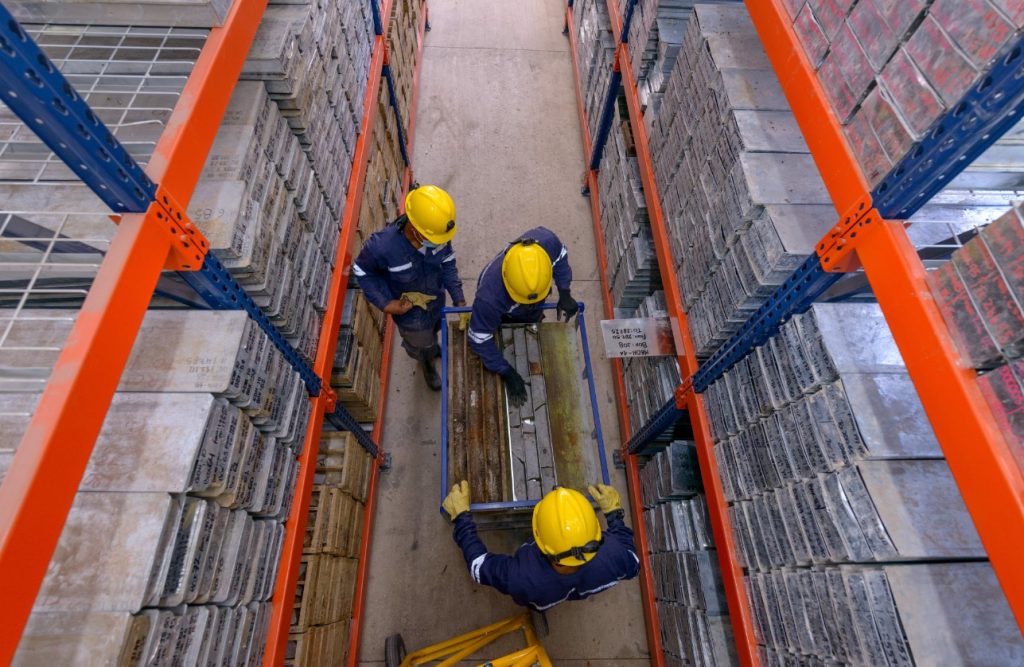Collective Mining drills 1.36 g/t AuEq over 389.45 metres at Guayabales, Colombia

Collective Mining Ltd. [TSX-CNL; OTCQX-CNLMF] has released assay results from the first four directional drill holes into the Apollo porphyry system at the Guayabales project, Colombia. Apollo hosts an outcropping high-grade, bulk-tonnage gold-silver-copper-tungsten porphyry system measuring 520 metres by 395 metres by 935 metres (previously 915 metres), which remains open for further expansion. Presently, there are four diamond drill rigs operating at the Guayabales project as part of the planned 42,000-metre drilling program for 2023.
Highlights: Four directional holes drilled into the Apollo porphyry system have expanded the wireframed envelope to the southwest, intercepted high-grade mineralization at the deepest vertical depth drilled to date and improved upon the grade profile below 1,500 metres elevation in a sparsely drilled area.
APC70-D4 intersected 389.45 metres at 1.36 g/t gold equivalent (AuEq) up to 935 metres below surface, with the final 21.8 metres of this intercept grading 4.41 g/t AuEq. APC70-D4 has locally extended the system by 100 metres to the southwest and intercepted the deepest mineralization ever encountered at Apollo.
APC70-D1, drilled to the south across the Apollo system at a near true angle, intersected 199.40 metres at 1.65 g/t AuEq, including 26.5 metres at 3.48 g/t AuEq to a maximum vertical depth of 745 metres below surface.
APC70-D2, which was drilled to the southeast also at a near true angle to the Apollo system, intersected 168.20 metres at 1.32 g/t AuEq, including 21.35 metres at 3.11 g/t AuEq to a maximum vertical depth of 625 metres below surface.
APC70-D3, which was drilled to the southwest, intersected 168.80 metres at 1.82 g/t AuEq to a maximum vertical depth of 654 metres below surface. The hole bottomed while still in mineralization with the final 4.70 metres grading 1.40 g/t AuEq, indicating potential for further expansion of the mineralized envelope.
Visual logging of recently completed directional drill hole APC70-D5 and APC88-D1 have intercepted a potential expansion at depth for Apollo as well as a new porphyry unit located north of Apollo under the Olympus system. Assay results for both holes are expected in January.
Drilling continues at the Guayabales project with four rigs, two operating at the Apollo and Trap targets, respectively, and a backlog of assay results expected in the near future.
Ari Sussman, executive chairman, commented: “Our directional drill program is off to an excellent start by demonstrating that orthogonal drilling improves the grade profile locally due to an abundance of zones flooded with mineralized CBM vein fluid. Additionally, directional drilling is making it much easier for the company to test and expand the Apollo envelope by allowing the company to quickly reach areas that are not possible to drill from surface due to topography. Visual observations of holes APC70-D5 (pad 1) and APC88-D1 (pad 14) notes intercepts of more than 500 metres (APC70-D5) and 500 metres plus a second zone of more than 200 metres (APC-88-D1), indicating that a potential material size increase to the envelope of the system will be forthcoming upon receipt of assays in early Q1 2024.”
This press release outlines the first results from the mother hole (APC-70) and four directional holes (APC70-D1 to D4) drilled from the end of the mother hole and designed to test for grade continuity at depth as well as western extensions to the Apollo porphyry system. APC-70 was drilled due south from Pad 1 and its directional holes form a fan pattern from southeast to southwest, intersecting the Apollo system more perpendicularly than prior drilling.
Diamond drilling at the Guayabales project currently totals 128 drill holes (approximately 51,380 metres) completed and assayed. The 2023 Phase II drilling program is advancing on schedule with assay results reported for 57 holes and an additional ten holes awaiting assay results from the laboratory.
With four diamond drill rigs now operating at site, the Company is advancing with the following objectives: Expanding the Apollo porphyry system both laterally and vertically. The company is currently advancing with directional drilling utilizing two rigs aimed at expanding the Apollo system to the north, west and at depth; drill test the Trap target in the northern portion on the Guayabales project. Three widely spaced reconnaissance holes were completed at Trap in 2022 with the discovery hole, TRC-1 assaying 102.2 metres at 1.53 g/t AuEq and containing similar mineralization to the Apollo porphyry system. Follow up drilling is now underway.
The Apollo area, as defined to date by surface mapping, rock sampling and copper and molybdenum soil geochemistry covers a 1,000 metres X 1,200 metres area and represents a large and unusually high-grade gold-silver-copper tungsten porphyry system.
Management, insiders and close family and friends own nearly 45% of the outstanding shares of the company.
